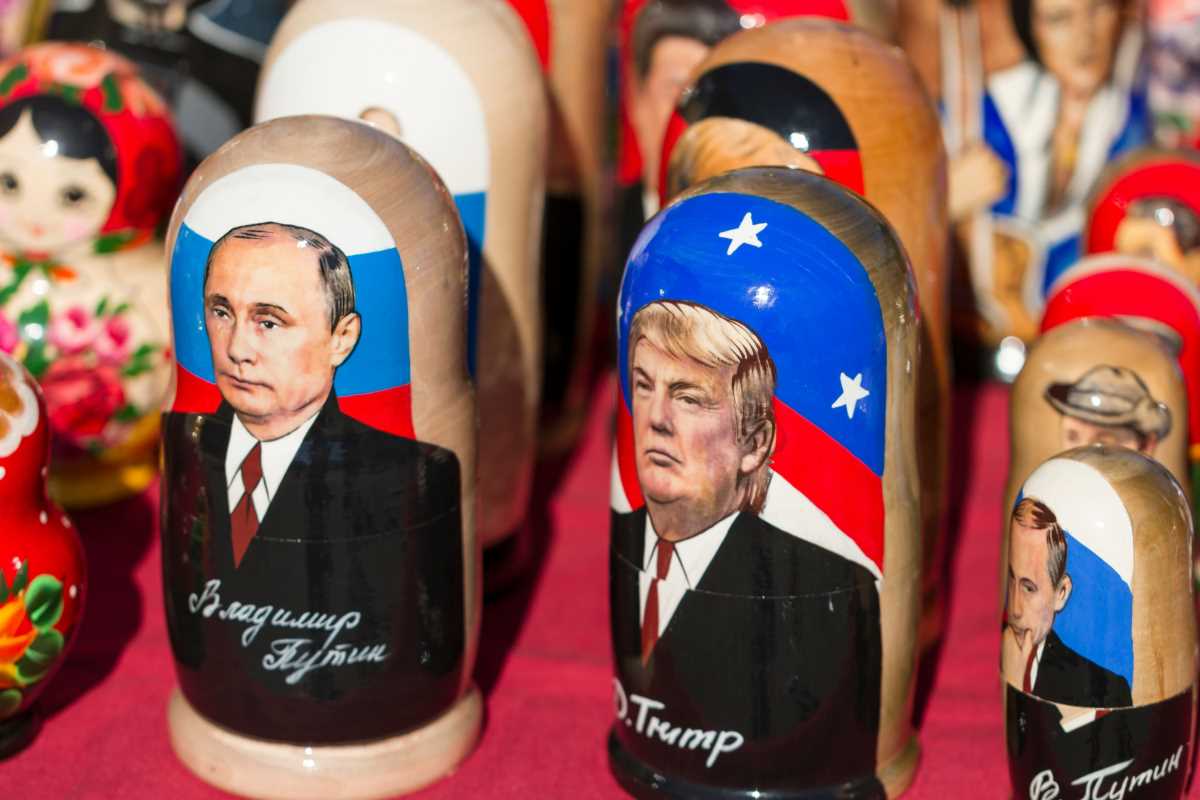Tariffs. Just the word can spark animated debates, flustered economists, and headlines that seem more dramatic than a soap opera plot. When it comes to Canada-U.S. relations, proposed tariffs are not just about dollars, cents, and crossed borders.
They strike at the heart of a partnership that goes beyond trade agreements and treaties. Canada and the United States have long shared a unique relationship, shaped by proximity, history, and, yes, the occasional brewing conflict. But what happens when tariffs enter the stage? Spoiler alert: things get complicated.
Shaking Up Economic Foundations
The economies of Canada and the United States are deeply intertwined, like two neighbors sharing the world’s longest undefended border. Trade between the two nations amounts to billions daily, with goods, services, and resources flowing seamlessly across borders. However, proposed tariffs can throw a wrench into this harmonious exchange.
Take, for instance, the steel and aluminum tariffs that emerged a few years back. The United States justified them on national security grounds, but Canada wasn’t buying it, retaliating with their own counter-tariffs. The result? Rising costs for businesses and consumers alike. Trade wars, even on a small scale, create ripples that are felt by everyone, from factory workers to retail shoppers.
For Canadian exporters, new tariffs can mean shrinking profits and lost opportunities. Whether it’s lumber, dairy, or automotive parts, increased duties place their products at a disadvantage, making them pricier for American buyers. Similarly, U.S. businesses dependent on Canadian imports may see their input costs soar, leading to tough decisions like raising prices or cutting jobs.
Compounding these challenges is the effect on supply chains. Industries like automotive manufacturing rely on cross-border collaboration, with parts zig-zagging across borders during production. Tariffs disrupt this harmony, forcing businesses to rethink their supply networks and absorb higher costs. The irony? Tariffs often harm the very sectors they’re meant to protect.
Economic uncertainty caused by tariff threats doesn’t just affect business decisions. Investors and markets tend to react unpredictably, with stock prices and currencies often taking a hit. And as history has shown, financial volatility rarely benefits anyone involved in trade disputes.
Political Tensions Run High
Canada and the United States may be allies, but they’re not immune to political disagreements. Tariff proposals have a knack for turning calm diplomacy into a war of words. Leaders often find themselves walking a tightrope, trying to appeal to their domestic audiences while keeping international relations intact.
From Canada’s perspective, tariffs can feel like a betrayal. After all, Canada has been one of the United States’ staunchest allies and trading partners. Introducing tariffs sends a message that the relationship might be less partnership and more one-sided deal. Politicians are quick to seize on the optics, painting tariffs as an attack on national industries and workers.
On the other side, American leaders often frame tariffs as a necessary measure to “level the playing field.” Populist rhetoric about protecting jobs and industries resonates with voters, even if the broader economic implications are less rosy. For policymakers, it’s a gamble between short-term political gains and the long-term consequences of straining ties with an essential ally.
Tariffs also highlight larger ideological divides. While Americans might see tariffs as a tactical tool for economic leverage, Canadians champion openness and cooperation. The juxtaposition of these views can escalate tensions, further complicating negotiations on other important bilateral issues.
Despite the rhetoric, diplomats and policymakers on both sides work tirelessly behind the scenes to resolve disputes. But progress isn’t always quick, and during negotiations, relationships can fray. The stress of these disagreements can bleed into other areas of collaboration, from environmental policies to defense alliances, straining bonds that have stood strong for decades.
Social and Cultural Impact
The ripple effect of tariffs extends beyond boardrooms and ministries into the everyday lives of people on both sides of the border. Canadians and Americans share a close cultural and social connection, but economic barriers can sow seeds of tension that influence perceptions of each other.
For Canadians, proposed tariffs often stoke feelings of resentment. Even as neighbors, there’s a perception that the United States wields its economic power unfairly, taking advantage of smaller trading partners under the guise of protectionism. Social media amplifies these sentiments, with memes and commentary painting the U.S. as the lumbering giant throwing its weight around.
On the flip side, some Americans may feel tariffs are a justified stance against “unfair trade practices.” This narrative, while popular, ignores the historical context of cooperation and the benefits both nations gain from free trade. Misunderstandings and caricatures of each other’s motives begin to dominate public conversations, overshadowing the bigger picture of mutual interdependence.
Additionally, tariffs impact communities that rely on cross-border interactions. Families split between the two nations, tourism businesses dependent on American visitors, and even small retailers selling favorite Canadian treats in U.S. towns feel the pinch. Relationships that would otherwise thrive become strained when goods or travel become pricier and more complicated.
Cultural exchanges, too, are affected. While trade disputes don’t erase decades of shared movies, music, and sports, they do create an undercurrent of mistrust. It’s hard to separate economic decisions from cultural perceptions when tensions make headlines day after day.
Winners, Losers, and The Hidden Costs
Tariffs are often pitched as a win-win scenario for domestic producers, designed to protect jobs and industries from international competition. But when you dig deeper, it’s rarely that cut and dried. Alongside clear winners are those who shoulder the hidden costs, and the ledger doesn’t always balance.
Domestic industries theoretically shielded by tariffs may experience a temporary boost. However, this often comes at a cost to businesses reliant on importing raw materials. For example, U.S. manufacturers using Canadian steel face higher production costs, making them less competitive internationally. Tariffs can ironically disadvantage the very companies they claim to support.
Consumers inevitably feel the squeeze, too. With higher costs trickling down, everything from groceries to home appliances can become more expensive. The reality is that tariffs function like hidden taxes, hitting lower-income households hardest while adding to the broader economic burden.
Trade partners like Canada often retaliate with their own tariffs, targeting industries that will cause maximum political pressure. This tit-for-tat strategy can escalate disputes quickly, leaving both sides worse off. Canadian farmers hit by retaliatory tariffs, for instance, may struggle to find new markets, resulting in economic pain both at home and abroad.
Even the perception of tariffs creates costs. Businesses hesitate to invest, fearing shifting regulations. Repairing trust after a trade dispute can take years, impacting everything from foreign relations to cooperative trade talks.
Key hidden costs of tariffs:
- Consumers bear the burden of higher prices.
- Businesses face uncertainty and reduced competitiveness.
- Retaliation harms unrelated industries.
- Long-term damage to diplomatic trust and relations.
- Economic stagnation from restricted cross-border trade.
The Path to Resolution
Despite the challenges, proposed tariffs don’t inevitably spell doom for Canada-U.S. relations. Both nations have a long history of resolving economic disputes through dialogue and compromise. Strong relationships between leaders and diplomats often pave the way for cooling tensions and finding balanced solutions.
International trade agreements play a huge role in limiting the damage tariffs can cause. Agreements like the United States-Mexico-Canada Agreement (USMCA) provide a framework for resolving disputes, promoting dialogue rather than confrontation. While these tools don’t eliminate all disagreements, they offer a basis for cooperation rooted in mutual interest.
Public pressure also holds weight. Businesses, consumers, and even political groups lobby for resolutions, emphasizing the benefits of cooperation over economic stand-offs. Grassroots efforts showcase the ways tariffs harm real people, painting a vivid picture policymakers can’t ignore.
Innovative solutions can also help sideline tariff disputes. Bilateral agreements for specific industries, compensation mechanisms, or temporary exemptions often calm the waters, allowing both nations to save face while maintaining essential trade flows.
The ultimate solution, though, lies in recognition. Canada and the United States share more than trade routes; they share values, partnerships, and histories that transcend periodic scuffles. Acknowledging this bigger picture is key to navigating future disputes with grace and mutual respect.
Beyond the Borders of Tariffs
Proposed tariffs are more than a numbers game. They test the strength of a partnership that’s stood the test of time. Economically, politically, and socially, they force hard conversations about how two close allies interact on the global stage. The good news? Despite the tension's tariffs bring, Canada and the United States have repeatedly demonstrated an ability to reconcile, to find common ground where differences arise.
The next time tariffs make headlines, it’s worth remembering that they’re not just about dollars and trade imbalances. They’re about people, communities, and relationships. With collaboration, diplomacy, and a shared commitment to partnership, both nations can weather these challenges and continue to thrive together. It might take more than maple syrup and baseball, but if any two nations can figure it out, it’s Canada and the United States.







